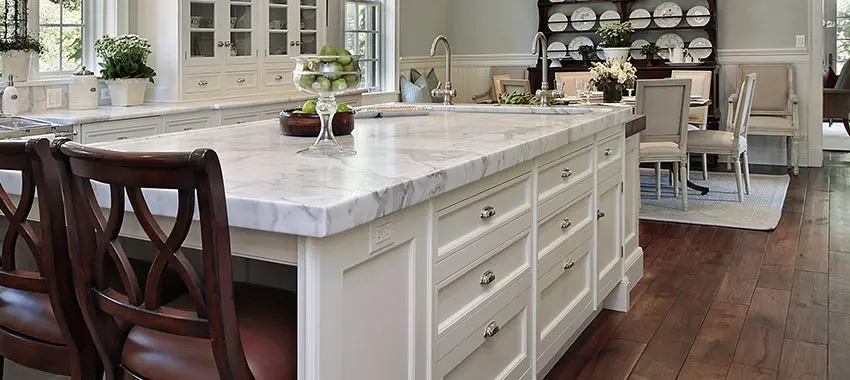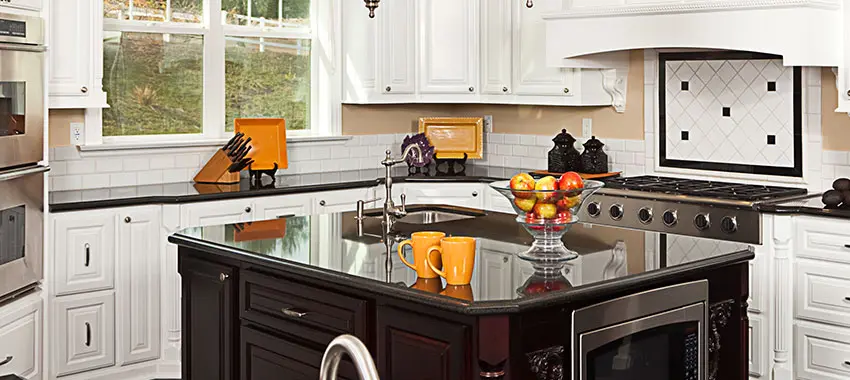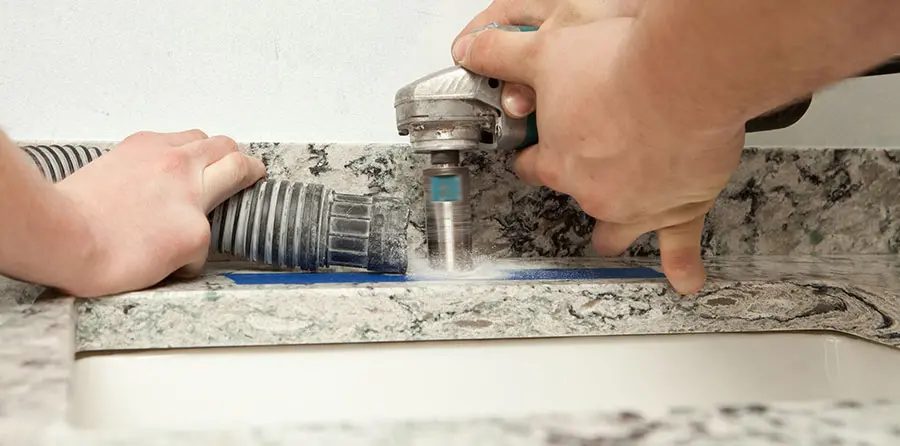Feb
How to Protect Granite Countertops
Every homeowner wants their countertops to last for as long as possible. And do you know what? It’s possible to do it. To help you out, here are tips on how to protect granite countertops:
Seal the countertops
This is a no brainer. In fact, this is the first thing people think about when they think about protecting their granite. Since granite is porous, it’s paramount that you protect it from stains by sealing it.
To do it, seal the surfaces immediately after installation, then at least once a year thereafter. For best results, use a high-quality sealant. An expert should do the sealing work.
Clean the surfaces regularly
You might have the impression that cleaning the countertops is an aesthetic issue, but this isn’t the case. Cleaning the countertops is a protective measure. When you regularly clean your countertops, you remove dirt and other materials that can scratch the surfaces.
The good thing is, you don’t have to be fancy about granite cleaning. Wiping the surfaces with a damp, soft cloth and some soap is enough. Wait for the surfaces to dry, then buff them as much as you can.
Cleaning the countertops is essential, but you will be doing more harm than good when you use the wrong cleaning products. To keep your countertops in top shape, use non-abrasive cleaners. To be even in a better place, use cleaners specially designed for granite surfaces.
As you prepare the meals or have a good time with your friends, it’s common for spills to happen. For example, juice or even water can spill on the countertops. When an accident happens, move with haste and get rid of the spills as soon as possible.
Although your countertops are sealed, letting large amounts of liquids stay on the surfaces for long is inviting disaster as the liquids can seep into the stone’s deeper layers and become hard to remove.
Protect your surfaces from extreme heat
It’s no doubt that granite is tough and can withstand a lot of heat, but it’s not heatproof. This means you will damage the countertops when you repeatedly expose them to a lot of heat.
Thankfully, you can prevent this from happening by placing your hot pots on hot pads, trivets and other protective items.
Even when taking hot coffee, don’t assume your countertops are tough and will take the heat. Have a coaster under the cups at all times.
Don’t sit on the countertops.
When you look at the countertops, they appear solid and extremely strong that many homeowners are tempted to sit or even stand on them. Don’t do this.
Despite the tough appearance, granite is brittle, especially on the edges, so when you exert a lot of pressure there, you risk breaking it.
To avoid this, don’t sit on the countertops when you are in the kitchen. You also shouldn’t step on the surfaces to reach the top shelves or replace the bulb. Instead, use a ladder.
If you often have people with you in the kitchen, have a few seats in place, so they aren’t inclined to sit on the countertops.
Ensure the countertops are installed by an experienced professional
You may be wondering what granite installation got to do with its protection, but the two go hand in hand. When your countertops are poorly installed, they are more likely to break or even fall from the cabinets and get damaged.
To avoid this, ensure your countertops are installed by experienced and certified granite installers Rockville.
The beauty of it is that it’s easy to find these contractors—you only need to be patient and strategic when doing it. The first place to ask is your friends and relatives. If none has recently worked with a contractor, try it online.
Do a Google search and interview the potential technicians that you find. Many people hire the first contractor that shows up first in the search results. Don’t do this as ranking first on Google isn’t proof they will provide a good service.
The key to finding the ideal contractor is to not be in a hurry. Have several interviews with the technicians and settle with the most experienced.
It also doesn’t hurt working with a contractor with a great personality.




